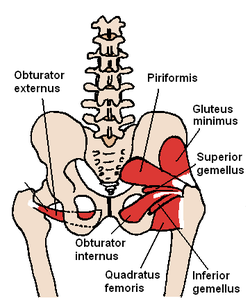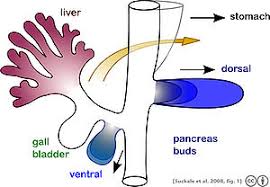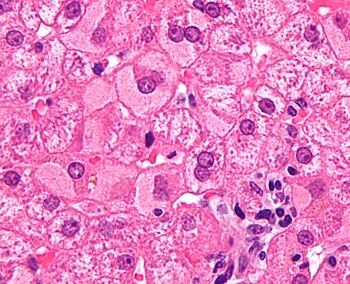
note the location of superior gemellus
it is least effected when obstruction with superior gluteal artery
PUDENDAL NERVE
NOTE THAT THE URINARY BLADDER IS NOT INCLUDED HERE
NOTE THAT THE RECTUM IS SUPPLIED, SEE INFERIOR ANAL NERVE
The superior gluteal artery (gluteal artery) is the largest branch of the internal iliac artery, and appears to be the continuation of the posterior division of that vessel.
It is a short artery which runs backward between the lumbosacral trunk and the first sacral nerve, and, passing out of the pelvis above the upper border of the Piriformis, immediately divides into a superficial and a deep branch.
下列何者行經於腰薦神經幹與第一薦神經之間,再經由坐骨大孔到臀部?
The palatoglossus is the only muscle of the tongue that is not innervated by the hypoglossal nerve (CN XII). It is innervated by the Vagus nerve (CN X)
Stylohyoid muscle
BY FACIAL NERVE 7
Along with the other three muscles of mastication (temporalis, medial pterygoid and lateral pterygoid), the masseter is innervated by the mandibular division of the trigeminal nerve.
The vast majority of ectopic pregnancies implant in the Fallopian tube. Pregnancies can grow in the fimbrial end (5% of all ectopics), the ampullary section (80%), the isthmus (12%), and the cornual and interstitial part of the tube (2%)
NOTE : MOST COMMON SIT E IS AT THE AMPULLARY SECTION


NOTE THAT THE PANCREATIC BUDS WILL BECOME THE BODY AND UNCINATE PROCESS OF PANCREAS

NOTE THAT IN THE INTERVILLOUS SPACE: MOTHER'S BLOOD

FAVORITE QUESTION:
AT CONTRACTION
I BAND SHORTEN
A BAND CHANGE NOT
TETRACYCLINE TO 30 S
ERYTHROMYCIN TO 50 S
THE -MYCIN GROUP ARE THE MACROLIDES
Neuraminidases, also called sialidases, catalyze the hydrolysis of terminal sialic acid residues from the newly formed virions and from the host cell receptors
NA 可以和此病毒之細胞受器(receptor),即唾液酸(sialic acid)結合 ----THIS IS WRONG: NO COMBINE
PICORNAVIRIDAE IS NAKED, NON ENVELOPE, POSITIVE STRAND RNA
As an antifungal, ketoconazole is structurally similar to imidazole and interferes with the fungal synthesis of ergosterol, a constituent of fungalcell membranes, as well as certain enzymes.
INTERFERE WITH MEMBRANCE SYNTHESIS
Pneumocystis pneumonia (PCP) or pneumocystosis is a form of pneumonia, caused by the yeast-like fungus (which had previously been erroneously classified as a protozoan) Pneumocystis jirovecii.
THE MOST COMMON EUKARYOTIC CAUSE OF INFECTION!

A number of different flatworm parasites in the family Schistosomatidae are what cause swimmer’s itch.
Naegleria fowleri (pronounced /nəˈɡlɪəriə/, also known as "the brain-eating amoeba") is a free-living excavate form of protist typically found in warm bodies of fresh water, such as ponds, lakes, rivers, and hot springs. It is also found in soil, near warm water discharges of industrial plants, and minimally chlorinated swimming pools (there is no evidence of this organism living in ocean water) in an amoeboid or temporary flagellate stage. It belongs to a group called the Percolozoa or Heterolobosea. Although not a true amoeba, the organism is often referred to as an amoeba for convenience.
在患者的腦脊髓液中看到快速移動的阿米巴,將其滴入蒸餾水中數小時後,則可看到其轉變為具兩
根鞭毛的鞭毛蟲,此人最可能感染的寄生蟲是
Ketone bodies are three water-soluble compounds that are produced as by-products when fatty acids are broken down for energy in the liver and kidney. They are used as a source of energy in the heart and brain.
NOTE FATTY ACID, NOT THE GLUCOSE
Production
Ketone bodies are produced from acetyl-CoA (see ketogenesis) mainly in the mitochondrial matrix of hepatocytes when carbohydrates are so scarce that energy must be obtained from breaking down fatty acids. Because of the high level of acetyl CoA present in the cell, the pyruvate dehydrogenase complex is inhibited, whereas pyruvate carboxylase becomes activated. Thus, the oxaloacetate produced will entergluconeogenesis rather than the citric acid cycle, as the latter is also inhibited by the elevated level of NADH resulting from ß-oxidation of fatty acids. The excess acetyl-CoA is therefore rerouted to ketogenesis. Such a state in humans is referred to as the fasted state.
Acetone is produced by spontaneous decarboxylation of acetoacetate, yielding levels of acetone much lower than those of other ketone bodies. Acetone cannot be converted back to acetyl-CoA; it is instead metabolized (e.g., converted to glucose via pyruvate[5]), excreted in theurine, or (as a consequence of its high vapor pressure) exhaled. Acetone is responsible for the characteristic "fruity" odor of the breath of










